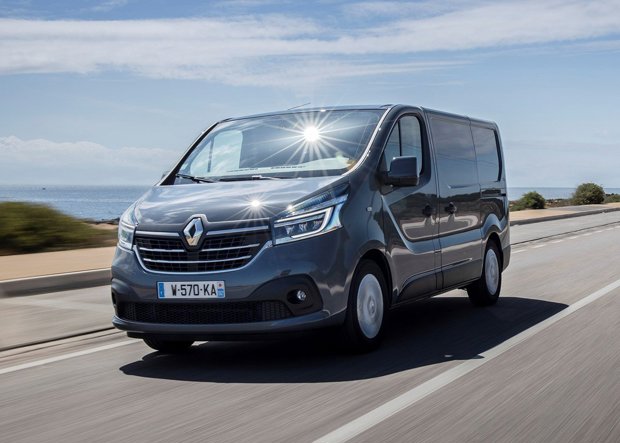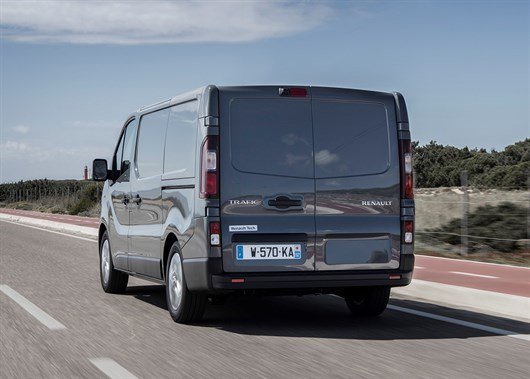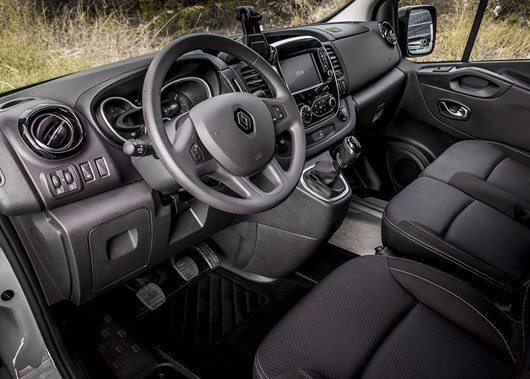Driven: 2019 Renault Trafic dCi 145

Renault’s hoping that 2019 is the year it re-establishes itself as a serious player in the medium van market. And its hopes are pinned on this – the new Trafic. Will it be good enough to challenge the best in class?
We should start by saying it‘s been a very long time since Renault had a best-seller in the medium panel van market in the UK. In fact, you’d have to cast your eyes back to 2016 to find the Trafic even among the yearly best-sellers. And even then it was still behind key rivals, like the Ford Transit Custom, Volkswagen Transporter and Vauxhall Vivaro.
Given its mixed fortunes, it’s perhaps understandable that for 2019 Renault has given the Trafic the most extensive overhaul since it was launched in 2014. The exterior, for example, has been smarted up with a new front-end that glistens with LED lighting signatures and generous helpings of chrome. There is also a new ‘Urban Grey’ colour scheme.
There are important changes under the metal, too. The 1.6 dCi turbodiesel engines are gone and replaced with all-new 2.0-litre dCi units, which use variable geometry turbocharging to develop more power and (more significantly) better low-gear pull under heavy loads. Outputs for the 2.0 dCi are 120PS, 145PS or 170PS, with the entry-level 95PS Trafic being axed from the line-up.

The model on test here - 2.0 dCi 145PS - is expected to be one of the most-popular Traffic vans on sale in the UK, with its 350Nm of torque and advertised maximum of 52mpg striking a useful balance between performance and economy. Buyers also get the choice of a six-speed manual or dual-clutch six-speed auto.
The benefits of the 2.0 dCi engine are immediately obviously from behind the wheel, with smoother power delivery at urban speeds and lower levels of engine noise on the motorway. The old 1.6 dCi engines were never particularly bad, but only the twin-turbo charged versions ever truly felt up to the task of heavy duty work. In comparison, the new 2.0 dCi feels more than a match, with only half the turbo power.
The steering and suspension has been carried over from the old Trafic, which means the 2019 van has the same sharp handling and comfortable ride quality as before. The six-speed auto is also excellent, with smooth changes and good anticipation on both the up and downshift.
The cabin has been heavily updated, with a new dashboard and upgraded seats that feel firmer and better suited for supporting tired back and leg muscles after a long day at work. Infotainment options are improved too, although you will have to spend more to benefit.
The range-topping Media Nav Evolution, for example, gets full Android Auto and Apple CarPlay compatibility while the cheaper R-Link is limited to Android Auto only. Neither system is a match for the tech used by Ford and Volkswagen, however, with the blocky graphics and slow screen changes making maps difficult to read when on the move.

In-cab storage has been improved, but the Trafic still lacks the space and smart touches of its rivals. The door pockets, for example, are narrow and some of the switch gear feels cheap. The optional dashboard top box also has clips that make it painfully easy to catch the sides of your fingers between the plastic trim. That said, everything feels sturdy and hardwearing, which will please builders. Vans with three seats also get a work table, that's located on the back of the middle seat.
The load area of the Trafic is the same as before, which means it will be easy to transfer load area racking and storage. The Trafic gets the same smart load solutions as before, with the most-popular one being the useful bulkhead hatch that extends the van's maximum load length to 4.1 metre. As before, the van can be ordered in two lengths and two heights, with the largest vans providing 8.6 cubic metres of load space.
The Trafic falters when it comes to payload. Renault has only released partial data when it comes to carrying capacity, but these suggest that the dCi 145 will carry 1082kg - 1250kg, depending on spec. Both the Transit Custom (130PS) and Vivaro (150PS) will carry more, with payloads for certain models exceeding 1400kg.
That said, Renault has clearly raised its game with the 2019 Trafic and the new 2.0-litre engines provide a welcome boost when it comes to driveability and claimed economy. Some business will undoubtedly take issue with the lack of outright payload capacity, but the Trafic is easy to recommend - even if the updates do not quite push it to best in class status.
Essential stats:
Prices start from: £23,550 (excluding VAT for SL28 Energy dCi 145 Business panel van), claimed NEDC economy: 52.3mpg, claimed WLTP economy: TBC CO2 emissions: 181g/km payload: up to 1250kg, towing capacity: TBC, length L1H1: 4999mm, width: 2283mm (including mirrors), height L1H1: 1971mm, engine: 1997cc four-in-line turbodiesel, power output: 145PS @3500rpm, 350Nm @ 1500rpm.

